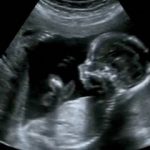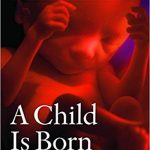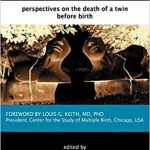Because of the bold fetal personhood testimonies here on Miscarriage Moms For Life (MMFL) that some pro-life groups prefer to ignore, we discovered research involving fetomaternal cell transference, or microchimerism (read Life-affirming Microchimerism), in the hopes of normalizing our testimonies. MMFL requests testimonies that highlight gestational babies as more personable—more human—believing these testimonies make it more difficult to continue justifying their murder. Notwithstanding, these bold fetal personhood testimonies raise intellectual doubts which the quotes on microchimerism below may address.
Stories of Fetomaternal Cell Transference
From Children’s cells live on in mothers:
“Way back when you and your mom shared a body, your cells mingled. Her cells slipped into your body and your cells circled back into her. This process, called fetal-maternal microchimerism, turns both mother and child into chimeras harboring little pieces of each other. . .. Microchimerism also has implications here for women who have lost pregnancies (read Personhood Stories), an extremely common situation hidden by the taboo of talking about miscarriages. Fetal cells seem to migrate early in pregnancy, meaning that even brief pregnancies may leave a cellular mark on a woman.”
For more on this topic, read our book, When Unborn Babies Speak. Find additional comfort in reading our book, Other Side Of Grief.

From The influence of fetal loss on the presence of fetal cell microchimerism: A systematic review:
“Given the increased cellular transfer from fetus to mother after terminations of pregnancy . . . and the presence of fetal hematopoietic progenitor cells among the transferred cells . . ., we speculate that a fetal loss
Continue reading...From Transfer of Fetal Cells with Multilineage Potential to Maternal Tissue:
“Fetal cells are present in the maternal blood stream after any length of gestation, meaning that even if a fetus is aborted, fetal cells will still be in a woman’s bloodstream. . .. Although fetal cells are transferred to women during pregnancy, the number of cells transferred varies. . .. In the eleven control samples, with no histories of male pregnancy, the team found no male cells.”
Microchimerism or the fetomaternal cell transference may be the scientific explanation for how some mothers can make personhood claims about their gestational children here on MMFL. But whether something can be scientifically proven is not the basis for its truth. The earth was round thousands of years before science was finally able to prove it, so science did not “make” the earth round, and likely many people died believing the truth the earth is round even though they had no proof and while others were claiming the earth is flat. (See Mysteries Miracles and Faith.) But for the doubters (like me before my experience), microchimerism is presented as just one possible explanation for our experiential truth.
For more on microchimerism and pregnancy, please consider reading our book, When Unborn Babies Speak. Read our book, Other Side Of Grief, to find comfort in your grief journey.



